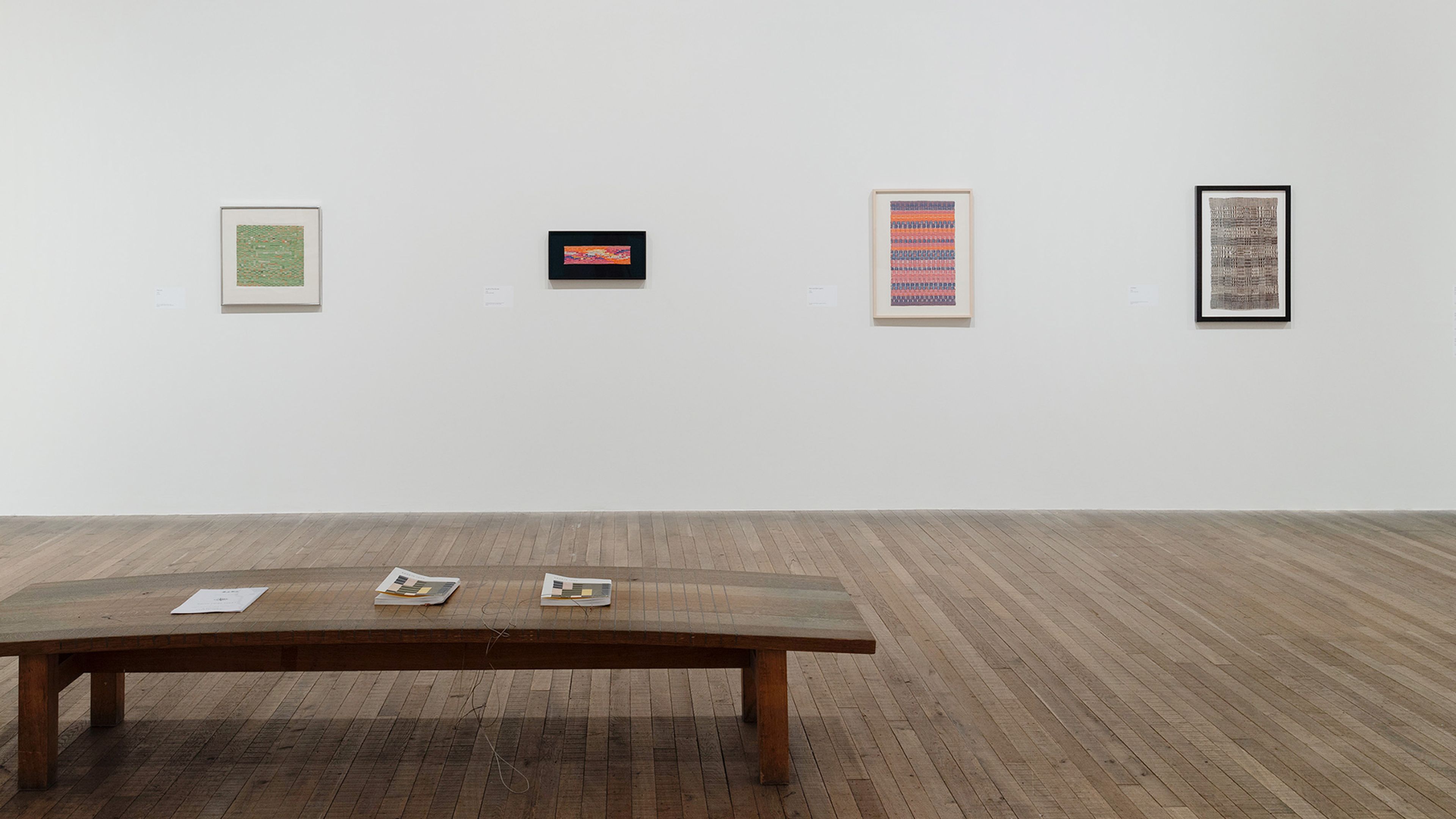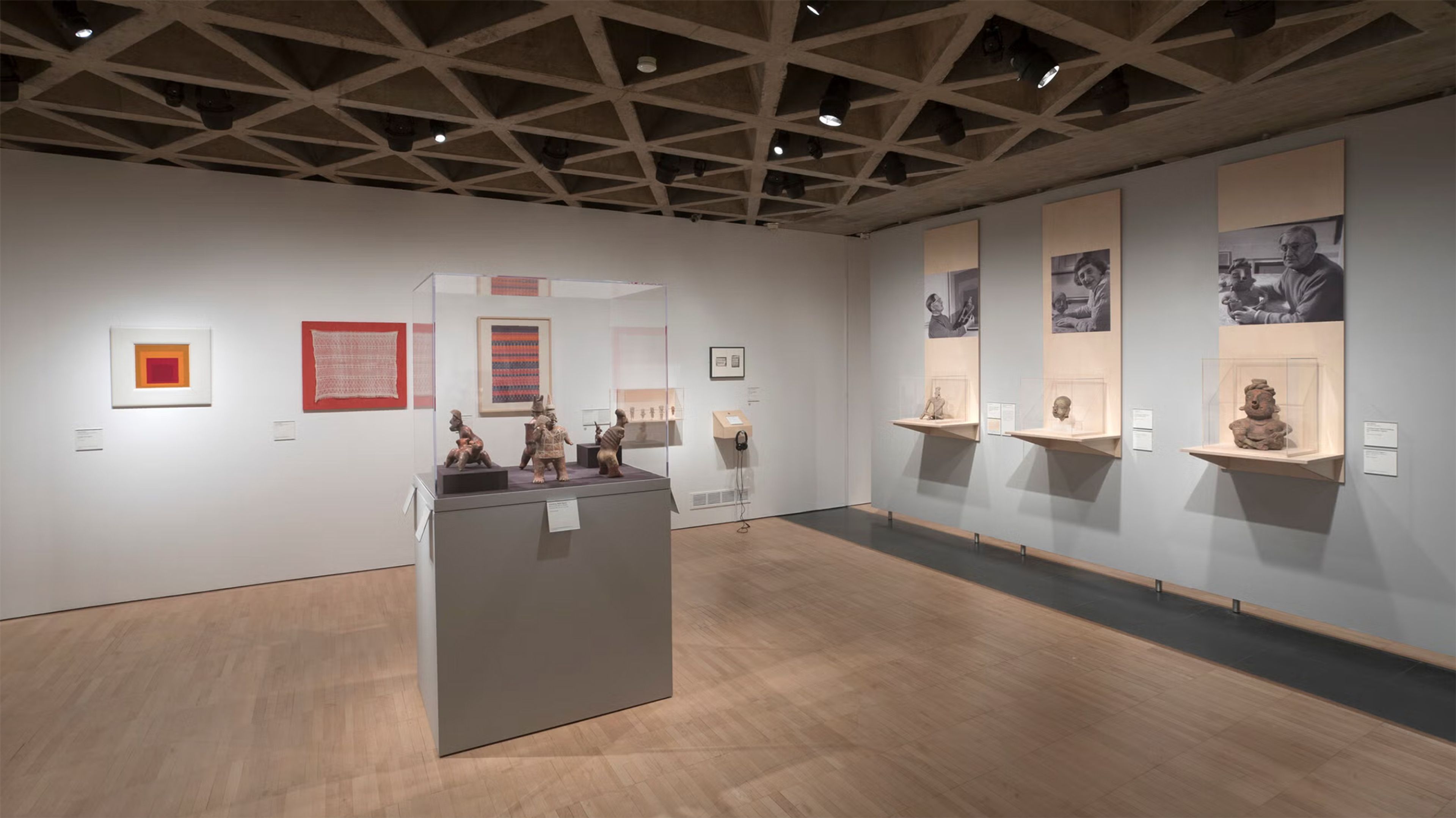Exceptional Works: Anni Albers
Red and Blue Layers, 1954
Cotton Framed: 29 3/4 x 22 7/8 x 1 1/2 inches 75.6 x 58.1 x 3.8 cm
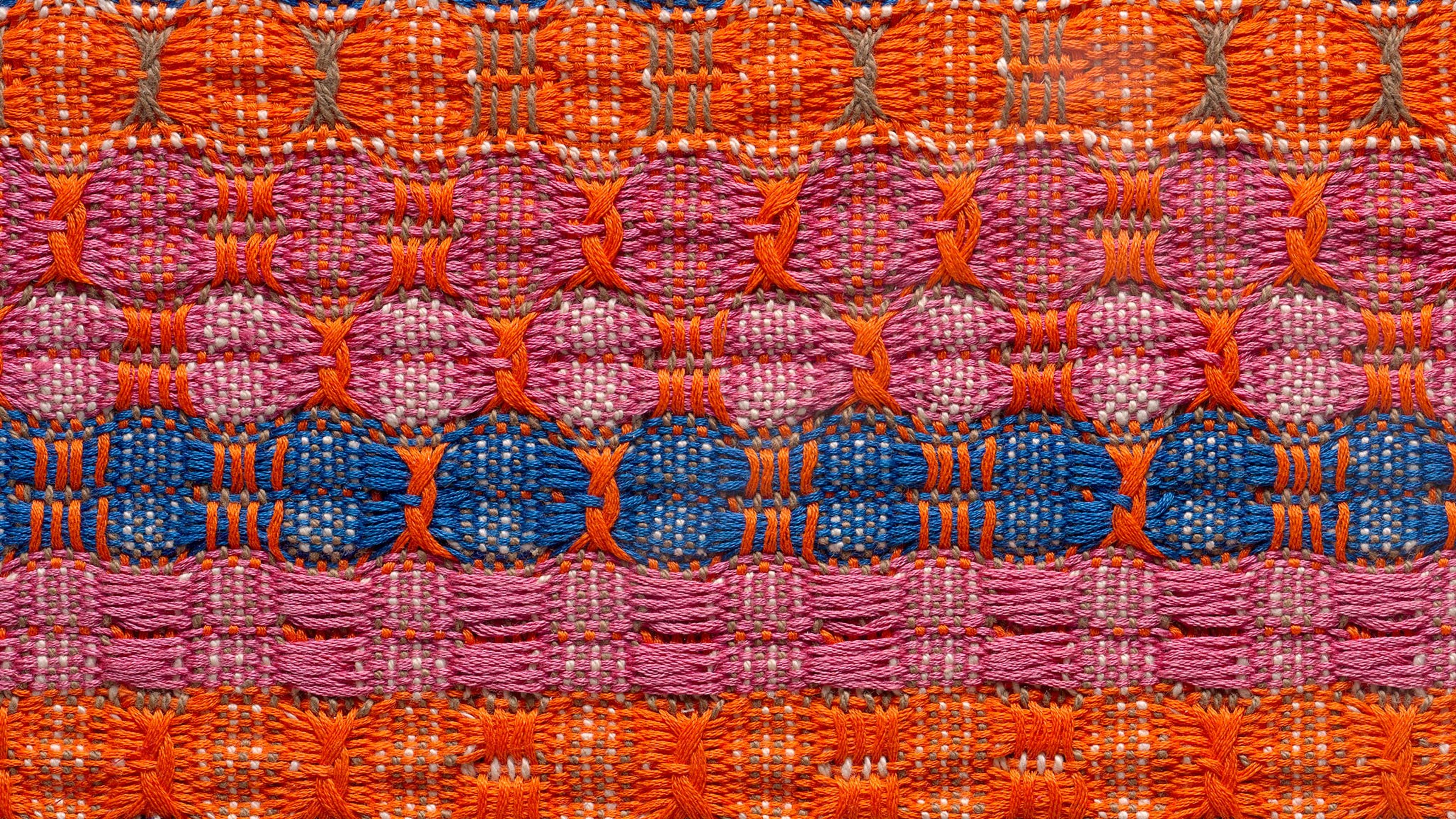
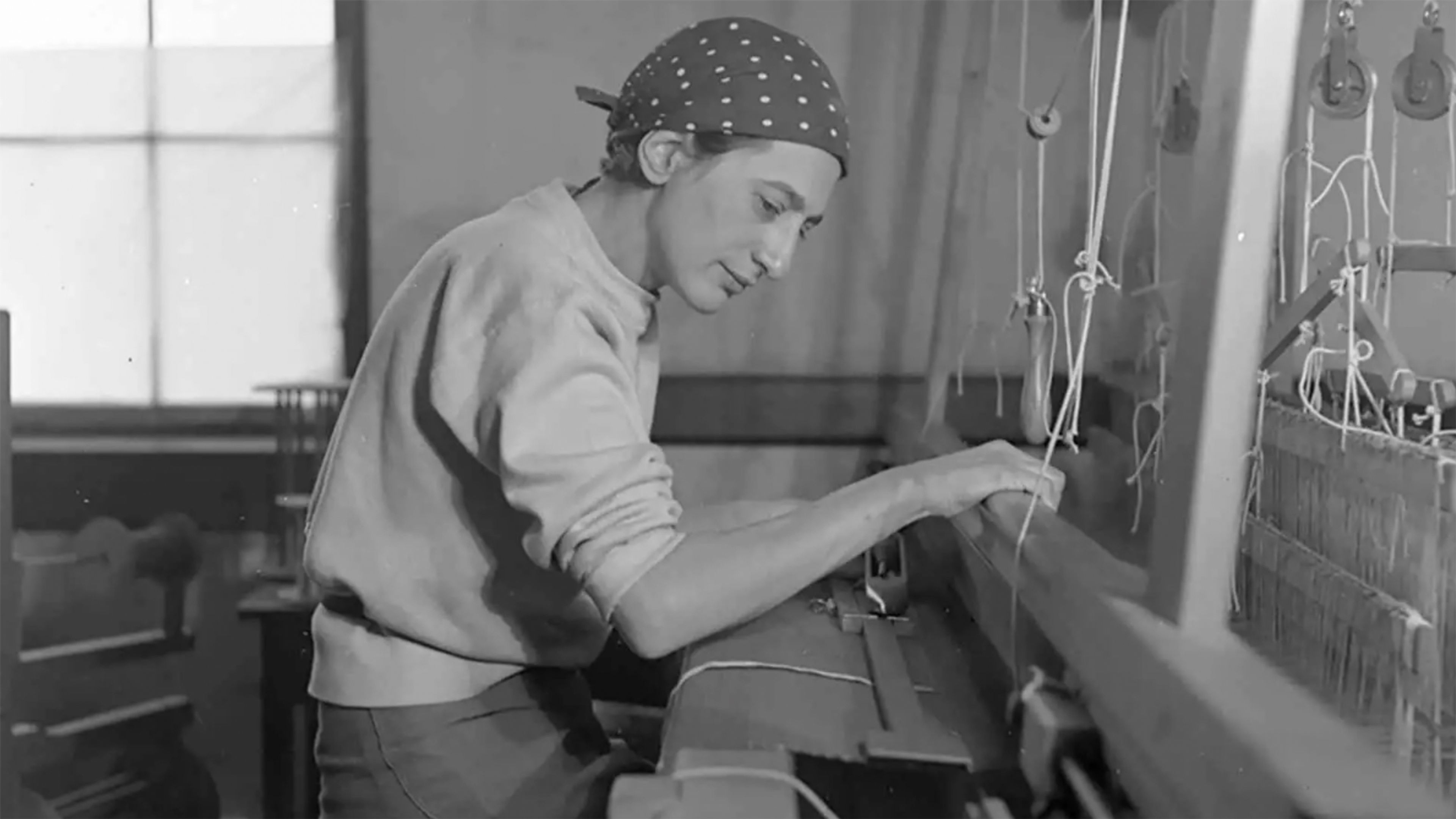
Anni Albers in her weaving studio at Black Mountain College, 1937. Photo by Helen M. Post. Courtesy of the Western Regional Archives, State Archives of North Carolina

Anni Albers (at bottom right) and members of the weaving workshop, Bauhaus Dessau, c. 1927. Photo by Lotte Stam-Beese. Courtesy of the Josef and Anni Albers Foundation
Known for her pioneering graphic wall hangings, weavings, and designs, Anni Albers is considered one of the most important abstract artists of the twentieth century, as well as an influential designer, printmaker, and educator. Across the breadth of her career, she combined a deep and intuitive understanding of materials and process with her inventive and visually engaging exploration of form and color.
Born in Berlin, she studied weaving at the Bauhaus beginning in 1922, eventually becoming acting director in 1931. Her innovative textiles from this period combined avant-garde geometric abstractions with weaving, creating works that were at once functional and aesthetic.
Anni was deeply influenced by pre-Columbian art and textiles, which she encountered on trips to Mexico during her time teaching at Black Mountain College. She went on to employ ancient techniques discovered through her in-depth study and collection of these works, leading to the creation of her pictorial weavings of the 1950s.
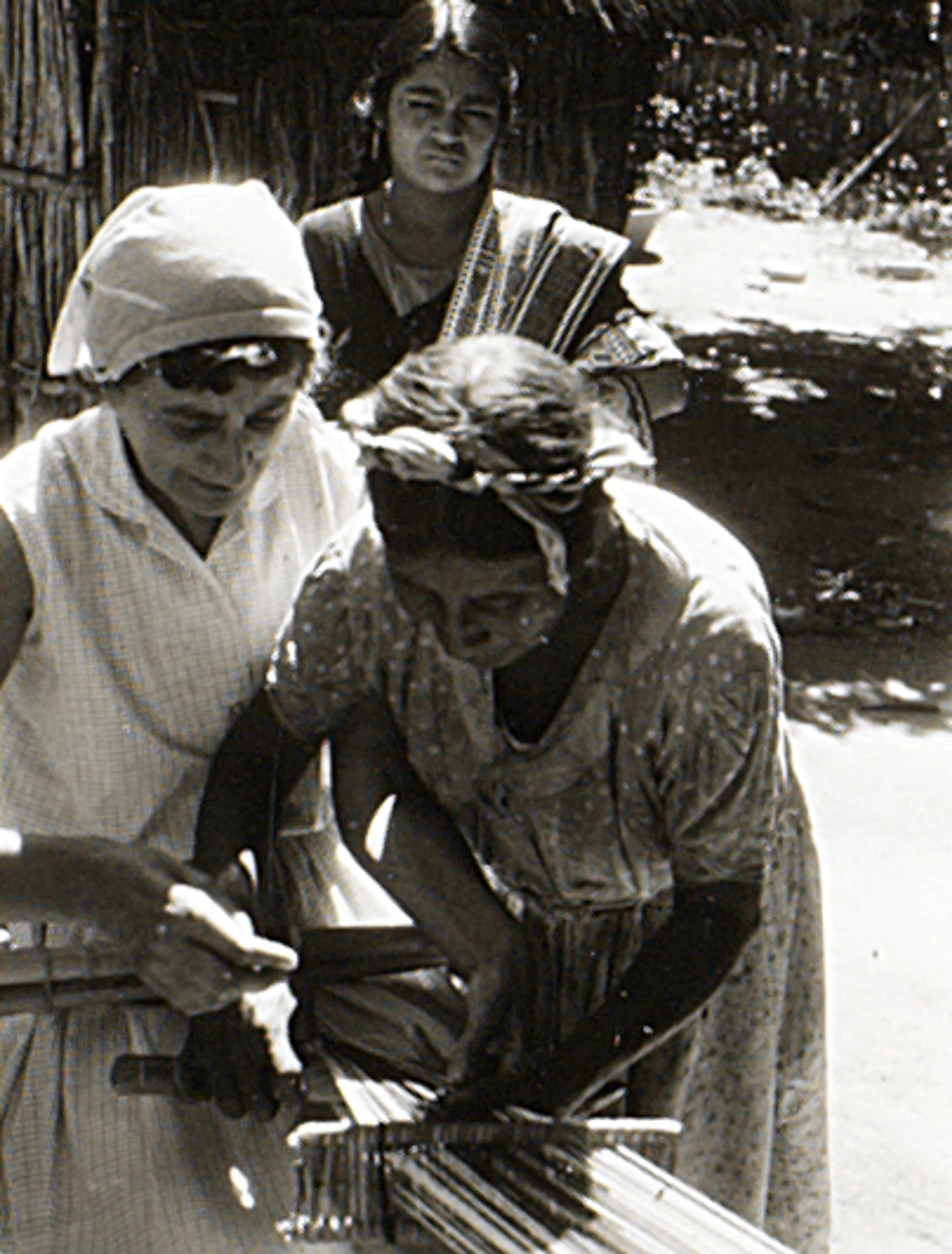
Anni Albers and local weavers, Santo Tomás, Oaxaca, Mexico, 1956. Photo by Josef Albers. © 2025 The Josef and Anni Albers Foundation/ARS, New York
Albers’s pictorial weavings show her avant-garde approach to her medium, pulling equally from a detailed study of ancient Peruvian and Mexican textiles and the conventions of twentieth-century pictorial abstraction. In her book On Weaving (1965), she described the work of Peruvian weavers as “infinite phantasy within the world of threads, conveying strength or playfulness, mystery or the reality of their surroundings, endlessly varied in presentation and construction, even though bound to a code of basic concepts.”
Composed of striated horizontal bands of color attenuated by vertical twists, Red and Blue Layers both invokes the modernist grid while questioning its emphasis on formal reduction by presenting a rhythmic composition that luminously shifts between two and three dimensions.
Anni Albers, Red and Blue Layers, 1954 (detail)
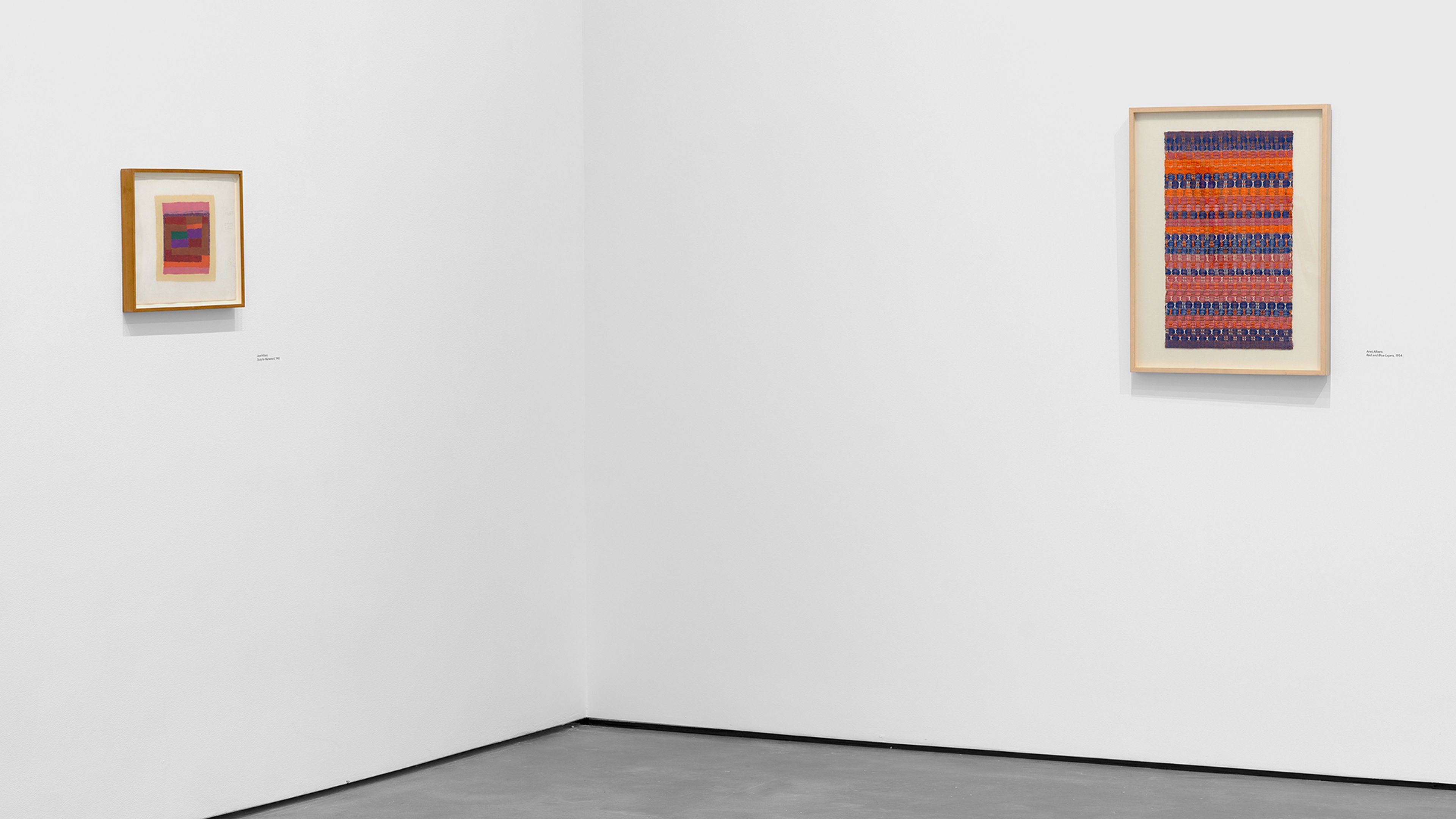
Installation view, Affinities: Anni Albers, Josef Albers, Paul Klee, David Zwirner, New York, 2025
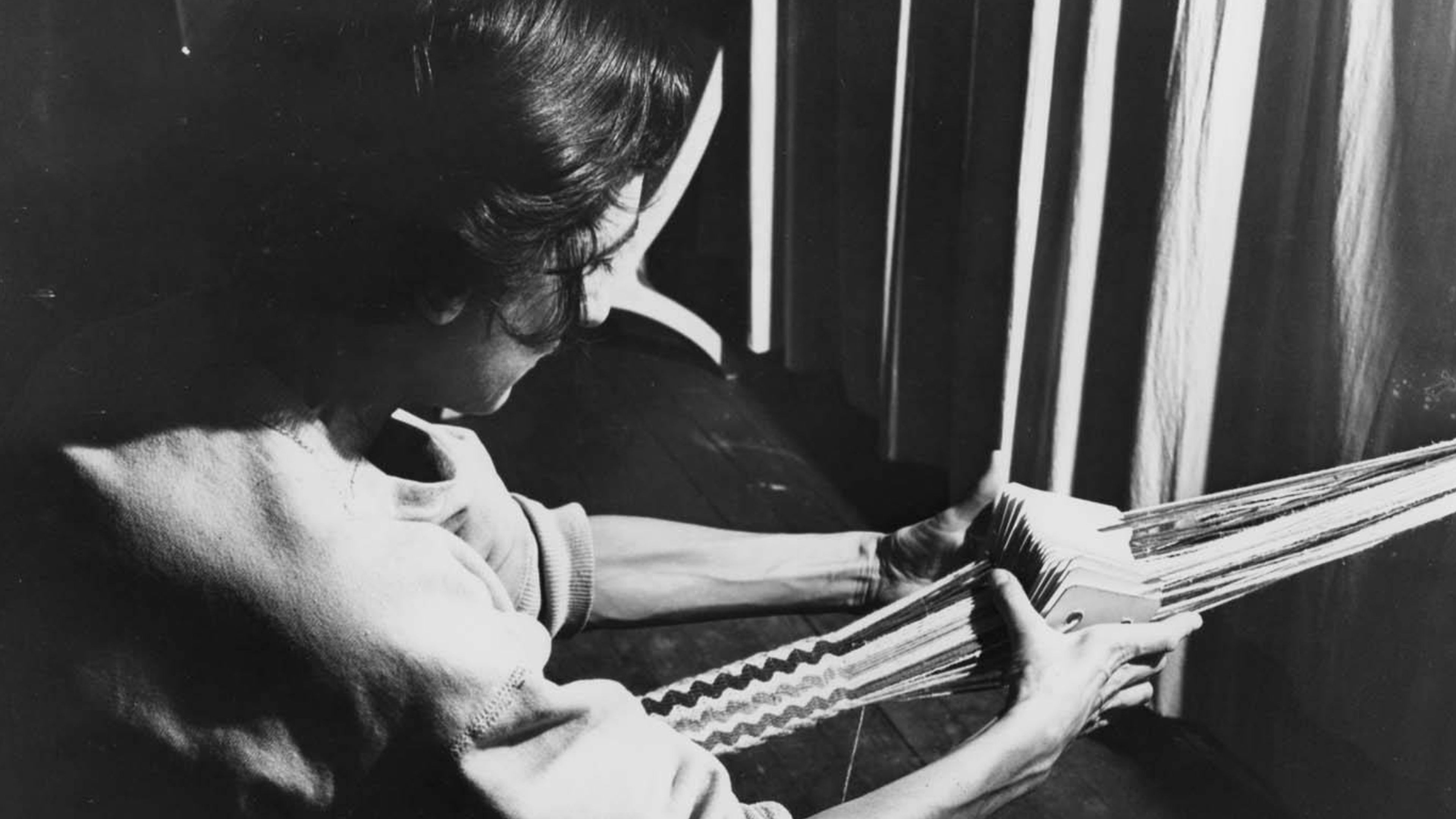
Anni Albers card weaving at Black Mountain College. Courtesy The North Carolina State Archives.
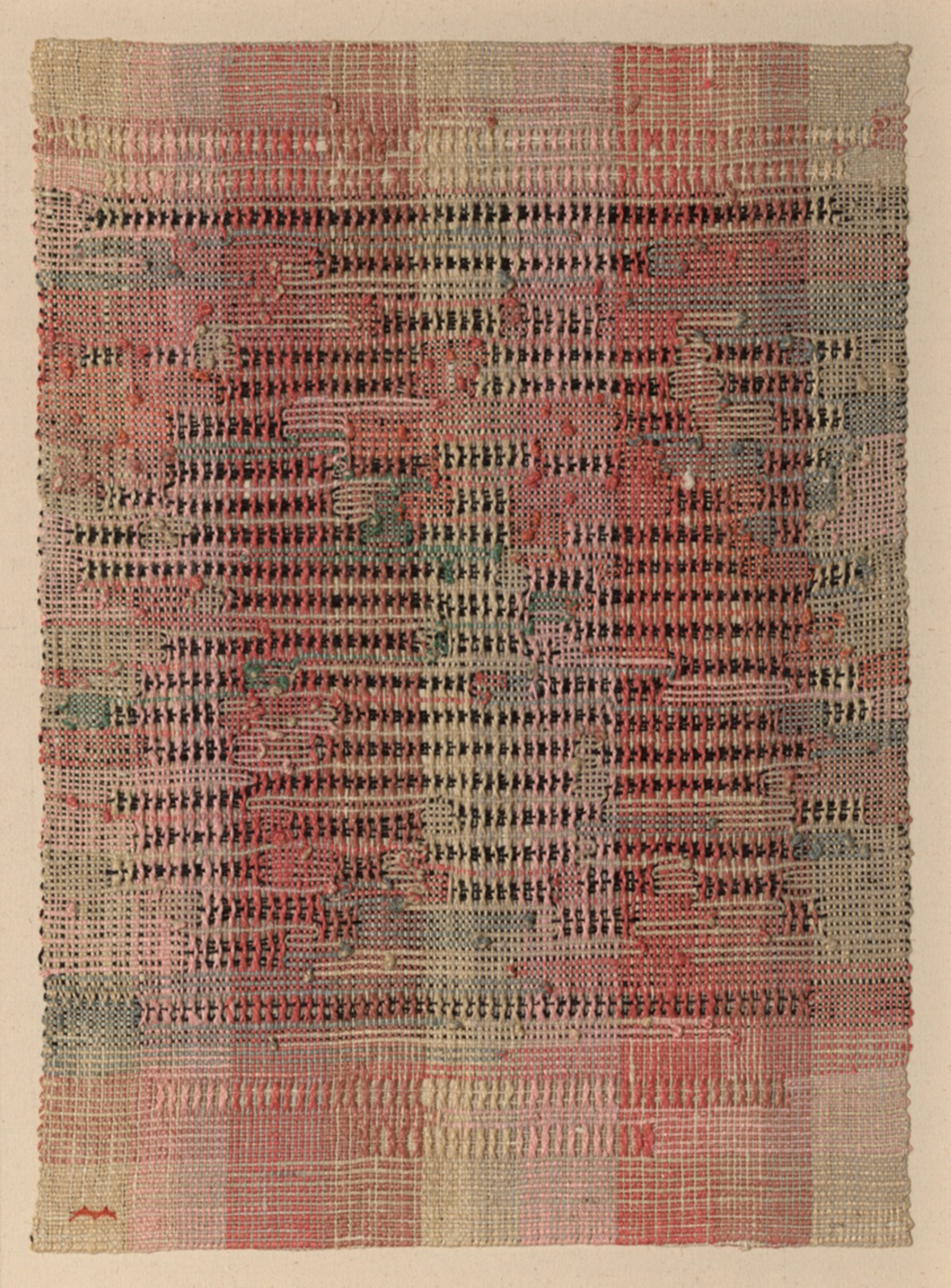
Anni Albers, Development in Rose II, 1952. Art Institute of Chicago
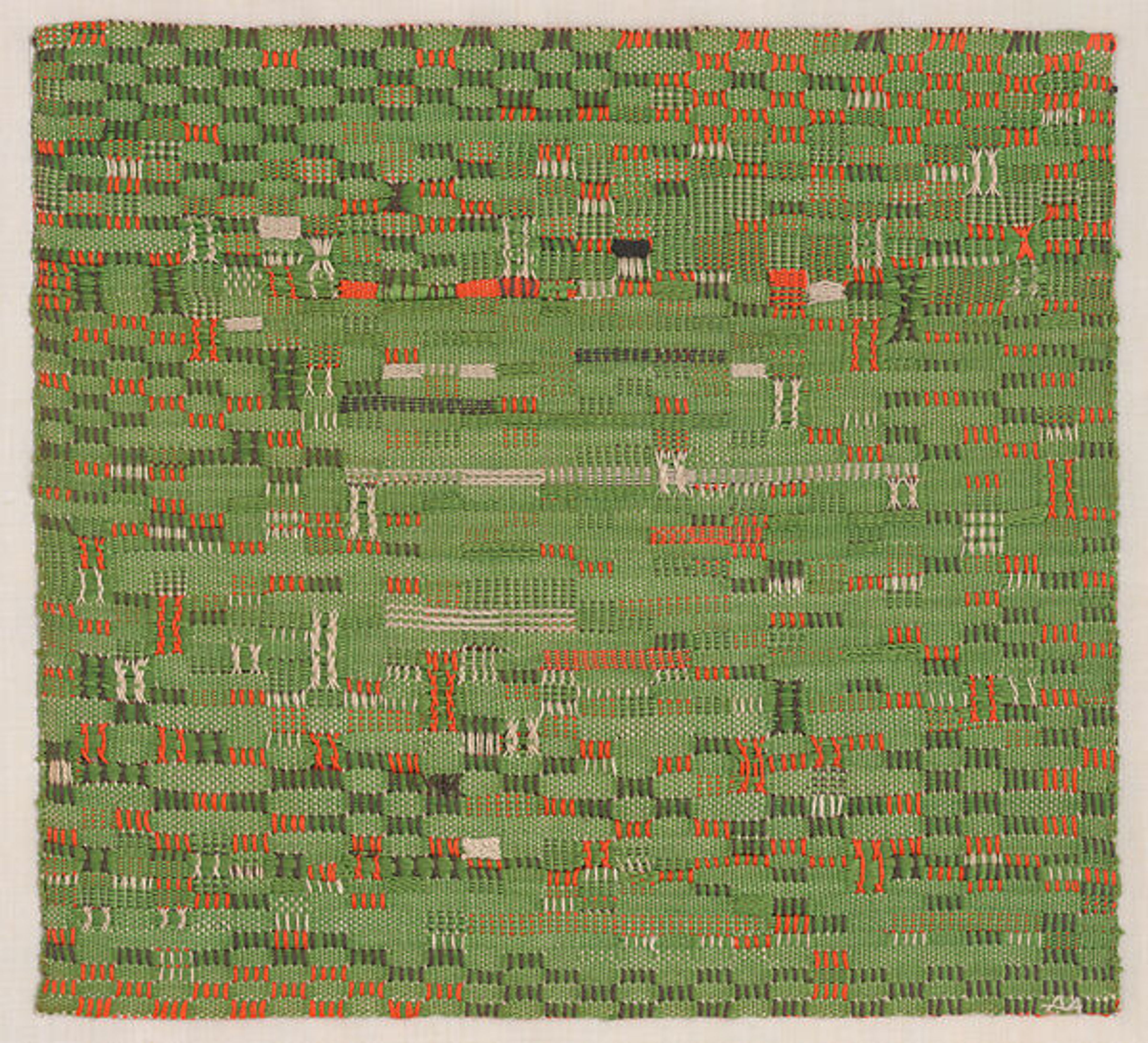
Anni Albers, Pasture, 1958. Metropolitan Museum of Art, New York
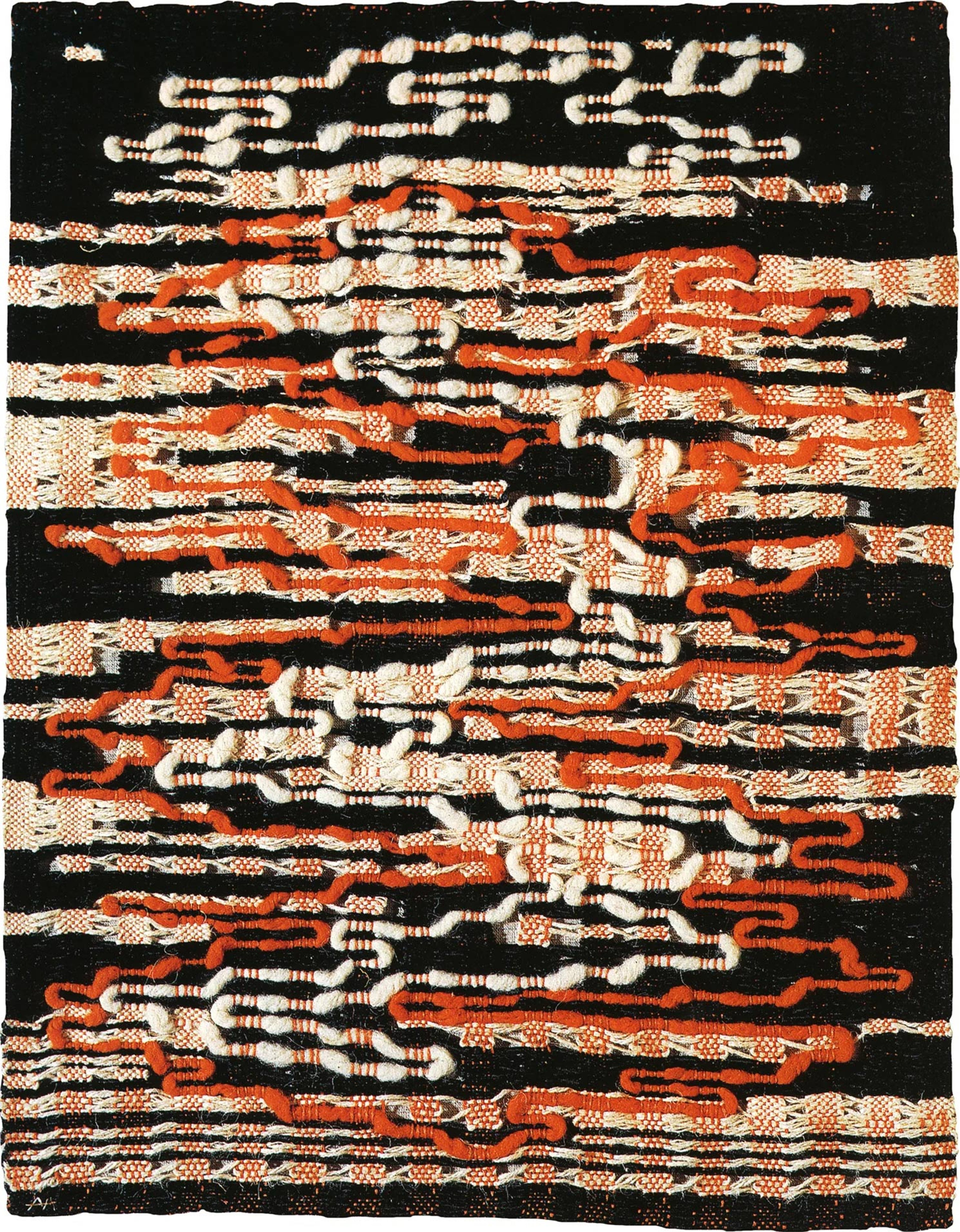
Anni Albers, Under Way, 1963. Hirshhorn Museum and Sculpture Garden, Washington, DC
The decade was bookended by two important exhibitions: In 1949, Albers became the first textile artist to have a one-person show at The Museum of Modern Art, New York; the exhibition Anni Albers: Textiles—which presented the full breadth of her vast oeuvre—subsequently traveled to twenty-six venues throughout the United States and Canada.
By the end of the 1950s, Anni Albers: Pictorial Weavings (which included the present work) had opened at the MIT New Gallery, Cambridge, Massachusetts. The exhibition traveled to the Carnegie Institute of Technology, Pittsburgh; Baltimore Museum of Art; Yale University Art Gallery, New Haven; and Contemporary Arts Museum, Houston between 1959 and 1960, thus cementing the centrality of this body of work both within Albers’s practice and twentieth-century art more generally.
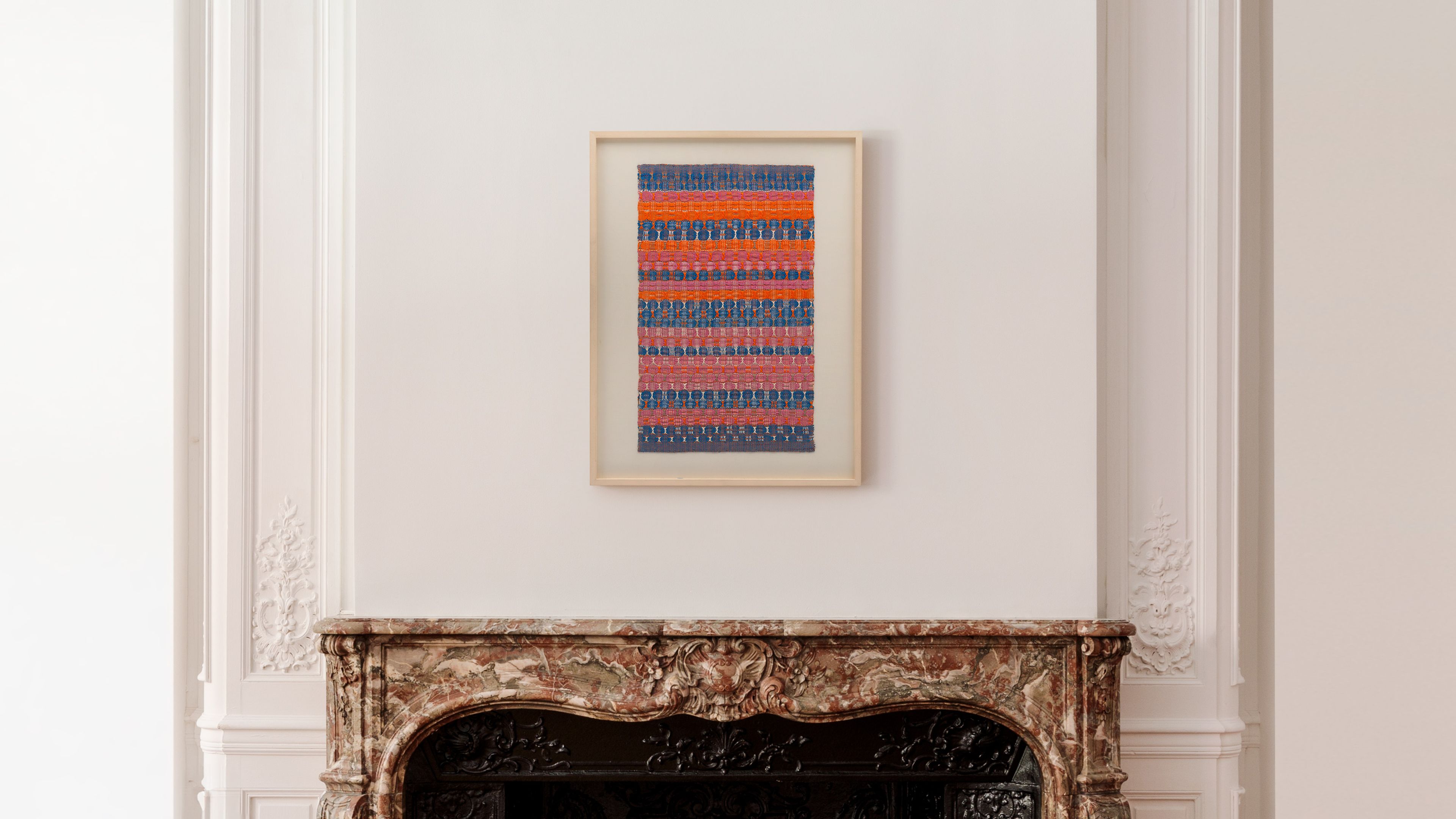

David Zwirner at Art Basel

